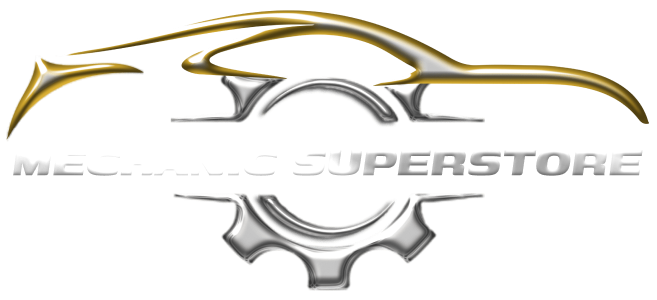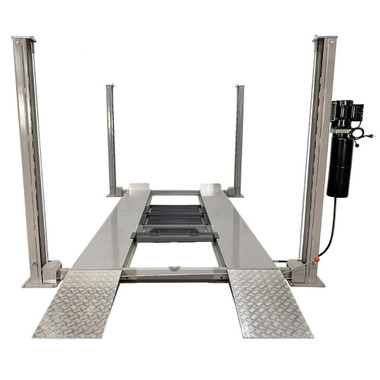Preventative Maintenance for Alignment Machines: Keeping Your Equipment in Top Shape
Estimated 0 min read
Ensuring alignment machines operate efficiently is vital. Misalignment can cause significant issues, affecting production and efficiency. Implementing proper alignment techniques and a proactive maintenance plan prevents failures. This keeps your equipment in optimal condition.
Keeping your alignment machines precise is key for accurate vehicle diagnostics. Servicing wheel alignment equipment and automotive alignment calibration are critical. Regularly maintaining alignment racks, wheel balancers, and lifts is essential. This ensures your diagnostic tools remain reliable and precise.
Proper Installation and Setup
Proper installation and setup of your Maintenance for Alignment Machines are key to their performance and longevity. Wheel Alignment Equipment Servicing and Automotive Alignment Calibration need a clean, flat surface. This surface should be free from debris, deformation, and corrosion. Any gaps or irregularities in the mounting base can cause vibration, loose bolts, and shim shifting. These issues can also lead to foot corrosion, making future adjustments more difficult.
Upon arrival of the alignment equipment, inspecting the mounting surfaces is crucial. Clean them thoroughly with a solvent or soft, non-woven abrasive. This ensures a consistent fit between the equipment and the base plate, reducing future problems. Documenting the installation process is also essential for acceptance testing, verification, and root cause analysis.
Acceptance testing to industry standards and verification after the break-in period are vital. They help identify any defects in the installation process. Developing a detailed alignment procedure addresses these critical points. This improves the performance and lifespan of your Automotive Alignment Calibration equipment, preventing costly downtime.
Alignment Procedures
Proper alignment is key for your Alignment Rack Repair, Wheel Balancer Maintenance, and Tire Service Equipment Upkeep to perform well and last long. Before starting, make sure the equipment is placed carefully to avoid damage. This damage can lead to raised edges at the impact point, severely affecting vertical alignment.
It's important to set the coupling spacing as recommended by the design or manufacturer. Use a straightedge on the couplings to softly align the motor in the horizontal plane. Once the motor is softly aligned, tighten all mounting bolts down. Then, perform a soft foot check.
Soft foot happens when the machine's mounting feet don't sit flat on the base. This can be due to noncoplanar feet, individual feet not being flat, or base corrosion. If corrosion is severe, machining the mounting surface may be needed to restore it properly.
After achieving rough alignment, follow a specific bolt tightening pattern. This ensures the accuracy of the alignment process. These pre-alignment steps may take time, but they are vital for precise alignment and efficient machine operation.

Standards and Tolerances
Understanding standards and tolerances is key in Alignment Lift Servicing and Precision Vehicle Diagnostic Tools. The American National Standards Institute (ANSI)/American Standards Association (ASA) S2.75-2017 standard was released. It ensures best practices in equipment alignment. This standard considers machine size, operating speeds, and coupling spacing to set specific tolerances.
It's vital to avoid external strain that could alter alignment. Such strain might come from pipe strain or an incorrect mounting base location. Couplings vary by type (rigid, flexible) and material (rubber, steel, neoprene), each with unique misalignment tolerances. Factors like material stiffness, load, torque, speed, and geometry influence a machine's tolerance for misalignment.

Mechanical and coupling manufacturers provide alignment tolerances based on their products' design. However, misalignment tolerance varies among equipment components. Design engineers consider various factors when determining alignment quality. Yet, alignment tolerances can differ based on coupling, motor, pump manufacturer recommendations, engineering studies, and technical publications.
While achieving precision alignment is not always feasible, the effort to align machines is worthwhile. Alignment Lift Servicing and Precision Vehicle Diagnostic Tools enhance machine performance. This leads to increased reliability, reduced wear on components, lower vibration levels, and decreased energy consumption.
Adjusting for Temperature Changes
Operating alignment machines requires accounting for temperature changes that affect alignment. As the equipment warms up, the shaft shifts, potentially causing misalignment. This is a critical issue to address.
Understanding the coefficient of linear expansion for machine materials is key. Materials like aluminum, bronze, cast iron, copper, mild steel, and stainless steel have varying coefficients. These values range from 0.0000059 to 0.0000126. Knowing the material composition helps estimate thermal growth and adjust alignment.
For instance, a temperature increase from 70°F to 120°F can cause a 0.0044 inches thermal growth in cast iron components. Similarly, bearing temperature changes affect alignment. A 20°F change in the outboard bearing and a 50°F change in the drive-end bearing result in 1.8 mils and 4.4 mils growth, respectively.
To ensure precise alignment, perform a "hot check" once the machine reaches operating temperature. This involves shutting down, checking alignment, and making corrections as needed. Monitoring temperature changes and adjusting alignment ensures optimal performance and calibration.
Maintenance for Alignment Machines
Keeping your Wheel Alignment Equipment Servicing, Alignment Rack Repair, and Wheel Balancer Maintenance in check is vital. Misalignment can cause equipment downtime, hike up energy costs, and damage machinery. On the flip side, well-aligned machinery lasts longer and needs fewer parts replaced.
Regular checks for alignment shifts are key, especially for crucial gear. Real-time condition monitoring can spot misalignment issues early, preventing failures. Vibration monitoring is a common method for spotting alignment problems. Predictive maintenance, based on real-time data, outshines traditional calendar-based maintenance.
Fluke Reliability offers a suite of services for your Wheel Alignment Equipment Servicing, Alignment Rack Repair, and Wheel Balancer Maintenance needs. Their remote condition monitoring services cater to your needs, with options for renting or buying equipment. You can choose to collect and analyze data in-house or outsource it. They also provide onsite and online training on product use, data collection, and vibration analysis. This ensures your team is ready to handle maintenance tasks efficiently.
Investing in proactive alignment maintenance can cut downtime, energy bills, and extend equipment life. This optimizes your maintenance efforts, keeping your machines in prime condition for years.
Benefits of Preventive Maintenance
Investing in preventive maintenance for your Tire Service Equipment Upkeep and Alignment Lift Servicing can significantly benefit your business. A proactive maintenance strategy can cut machinery repair costs by up to 25%. It anticipates wear and tear, allowing for continuous corrective actions to maintain equipment reliability and performance.
Proper preventive maintenance boosts equipment and system reliability. This leads to fewer unexpected breakdowns, which are costly and disruptive. It also extends equipment lifespan, reducing the need for expensive replacements and enhancing resale value. Better parts inventory management is another benefit, addressing issues before they become major problems.
Preventive maintenance for your Tire Service Equipment Upkeep and Alignment Lift Servicing also enhances safety and regulatory compliance. Regular inspections and maintenance identify and address potential hazards, ensuring a safer work environment. This reduces the risk of costly legal penalties and improves operational efficiency.
The advantages of preventive maintenance go beyond cost savings and improved equipment reliability. A proactive maintenance approach ensures the longevity and optimal performance of your equipment. This contributes to the overall success and profitability of your business.
Developing a PM Program
Creating a thorough preventive maintenance (PM) program is vital for extending your alignment machines' lifespan and reducing unplanned downtime. A robust PM program includes various activities like regular inspections, site visits, in-shop services, diagnostic tests, and using advanced equipment management software.
To craft an effective PM program, setting clear maintenance goals and key performance indicators (KPIs) is crucial. KPIs might include equipment uptime, maintenance costs, mean time to repair (MTTR), and mean time between failures (MTBF). Tracking these metrics helps pinpoint areas for enhancement and guides data-driven decisions for optimizing Maintenance for Alignment Machines.
Adopting a Computerized Maintenance Management System (CMMS) can simplify managing your PM program. LLumin's CMMS+ software, for example, provides asset and work management, data analysis, overall equipment effectiveness (OEE) utility, and risk management. Training your maintenance teams on CMMS solutions can significantly improve your PM program's outcomes and increase ROI.
Continuous monitoring and improvement are key to the success of your Precision Vehicle Diagnostic Tools. Regularly reviewing and refining your PM program helps pinpoint areas needing attention. This allows you to tackle issues promptly, ensuring optimal equipment performance.
In conclusion, a well-planned and executed PM program can lead to equipment reliability, reduced downtime, extended equipment life, and lower repair costs. By investing in the right tools, training, and management strategies, you can guarantee the long-term performance and efficiency of your alignment machines.
Equipment Knowledge and Training
Understanding your Wheel Alignment Equipment Servicing and Automotive Alignment Calibration tools is key for a solid preventive maintenance plan. The owner's manuals are a treasure trove of information. They outline the service intervals, the right products to use, and the operating conditions to maintain.
Machine operators bring a unique perspective to the table. Their hands-on experience adds depth to the knowledge from the manuals. This blend ensures a more effective maintenance strategy for your alignment equipment.
The Precision Shaft Alignment training course is a prime example. It offers a 3-month subscription with over four hours of narration. It covers precision alignment, reliability benefits, dial-indicator calculations, and more. Quizzes are included to ensure a deep understanding of each topic.
Experienced practitioners have seen improvements in their work by mastering dial indicator alignment. Comprehensive training boosts maintenance teams' skills. This leads to better Wheel Alignment Equipment Servicing, enhancing machine reliability and performance.
Adherence to Service Intervals
Ensuring the longevity and performance of your alignment machines is paramount. Adhering to the factory-recommended maintenance intervals is crucial for this goal. The detailed manuals provided by manufacturers are packed with knowledge, talent, and experience. They offer comprehensive heavy equipment maintenance schedules.
Aligning your maintenance practices with these guidelines is vital for optimal operation. This includes Alignment Rack Repair, Wheel Balancer Maintenance, and other Tire Service Equipment Upkeep. Industry statistics show significant benefits from strict preventive maintenance. These include a 60% decrease in equipment failure downtime, a 50% increase in resale value, and a 40% reduction in worker safety incidents.
Following recommended service intervals can extend your equipment's life by 80%. It also allows for 70% more efficient operation and keeps insurance coverage and warranties effective. Engage your team in analyzing maintenance results and identifying root causes of low compliance. This drives continuous improvement in schedule adherence practices. Embrace transparency and feedback to ensure the success of your preventive maintenance program.











